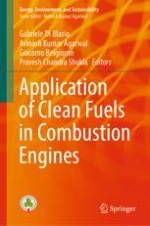2022 | OriginalPaper | Chapter
7. Biofuel Combustion Generated Particles Analysis
Authors : Farzad Jaliliantabar, Abdul Adam Abdullah, Paolo Carlucci, Sudhakar Kumarasamy
Published in: Application of Clean Fuels in Combustion Engines
Publisher: Springer Nature Singapore
Activate our intelligent search to find suitable subject content or patents.
Select sections of text to find matching patents with Artificial Intelligence. powered by
Select sections of text to find additional relevant content using AI-assisted search. powered by
